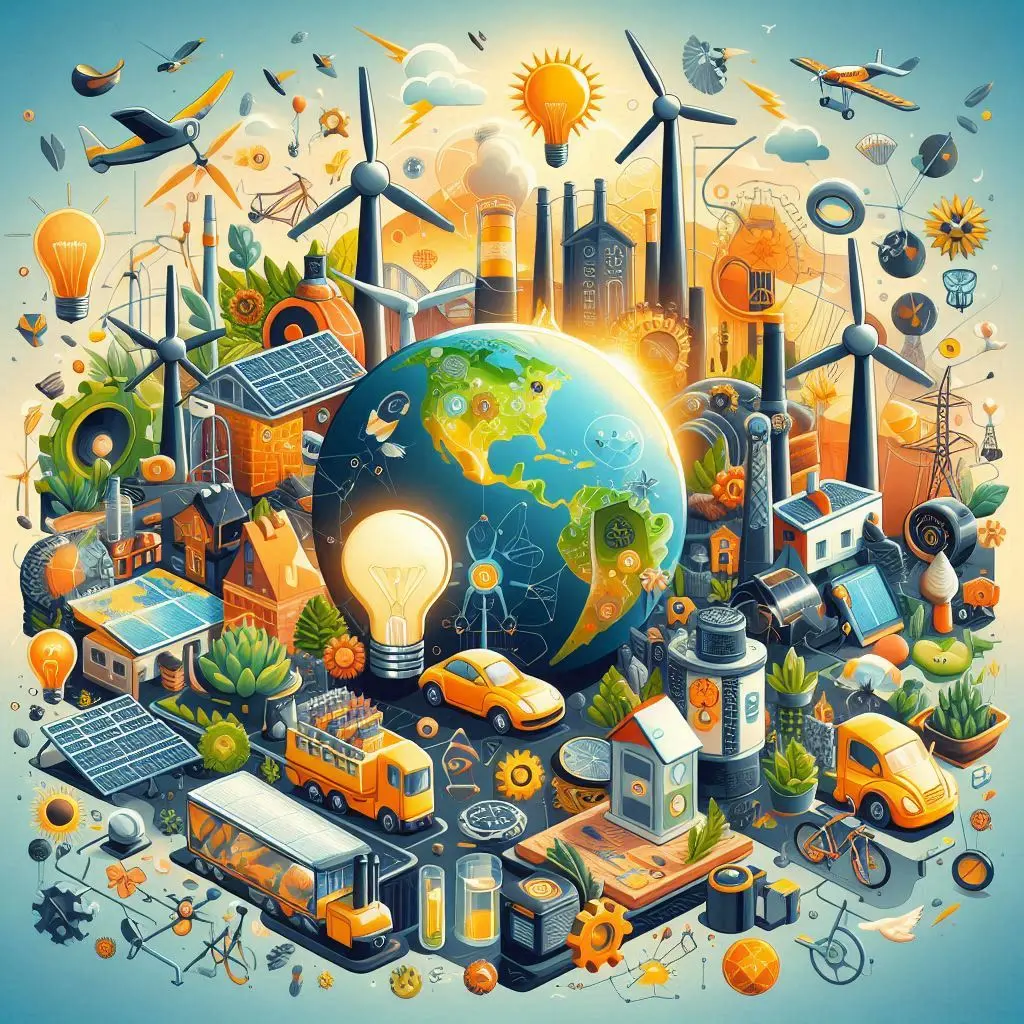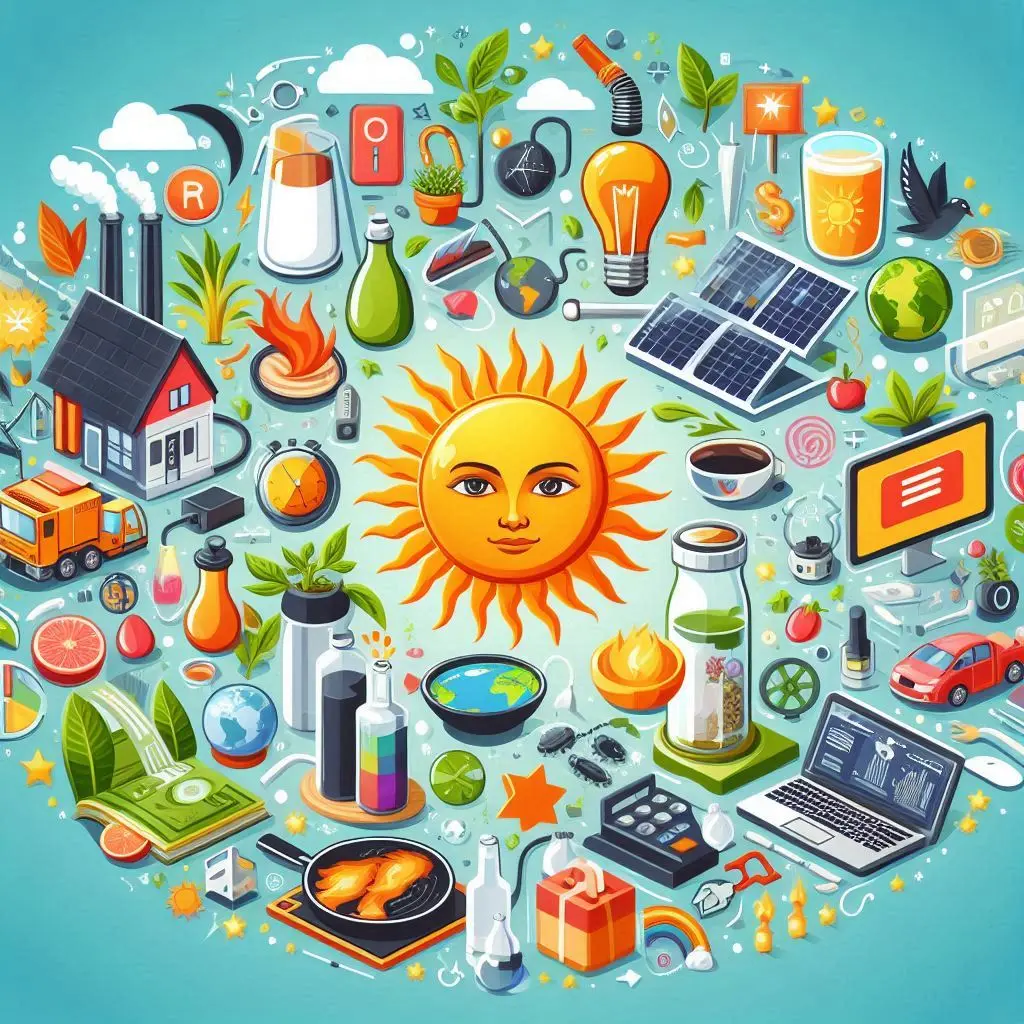Alternative Sources of Energy: A Simple Guide
Imagine a world where the air is clean, the skies are clear, and the energy we use comes from sources that are kind to our planet. This isn't just a dream-it's a future we can achieve with alternative sources of energy. As we face environmental challenges and technological advancements, the choices we make today will shape the world for future generations. Embracing renewable energy is not just a scientific effort; it's a personal commitment to protecting our planet's beauty and health.

Key Insights
- Alternative energy sources are essential for a sustainable future and reducing our carbon footprint.
- Solar, wind, hydro, geothermal, and biomass are the main renewable energy sources.
- Each energy source has its own benefits and challenges.
- Switching to renewable energy can help fight climate change and improve energy security.
Solar Energy
Overview
Solar energy captures the sun's rays to produce electricity. It is one of the most abundant and accessible renewable energy sources.
Benefits
- Abundant and Renewable: The sun provides more energy in one hour than the world uses in a year.
- Low Operating Costs: Once installed, solar panels need little maintenance.
- Reduces Electricity Bills: Solar energy can significantly lower electricity costs.
Challenges
- Initial Costs: Installing solar panels can be expensive.
- Weather Dependent: Solar energy production depends on weather and time of day.
- Space Requirements: Large areas are needed to install enough solar panels for significant energy production.
" Solar power is the last energy resource that isn't owned yet - nobody taxes the sun yet. " - Bonnie Raitt
Solar Energy Statistics
| Metric | Value |
|---|---|
| Global Capacity (2023) | 940 GW |
| Average Cost per kWh | $0.06 |
| CO2 Emissions Reduced | 1.5 billion tons/year |
Wind Energy
Overview
Wind energy converts the wind's kinetic energy into mechanical power or electricity using wind turbines.
Benefits
- Clean and Renewable: Wind energy is a clean power source that doesn't pollute the air.
- Cost-Effective: Wind power is one of the cheapest renewable energy technologies.
- Job Creation: The wind industry creates many jobs in manufacturing, installation, and maintenance.
Challenges
- Intermittent: Wind doesn't blow consistently, leading to variable energy production.
- Noise and Aesthetic Impact: Wind turbines can be noisy and affect the visual landscape.
- Wildlife Impact: Turbines can pose a threat to birds and bats.
" The answer, my friend, is blowin' in the wind. " - Bob Dylan
Wind Energy Statistics
| Metric | Value |
|---|---|
| Global Capacity (2023) | 743 GW |
| Average Cost per kWh | $0.04 |
| CO2 Emissions Reduced | 1.2 billion tons/year |

Hydropower
Overview
Hydropower generates electricity by using the energy of moving water. It is one of the oldest and most widely used renewable energy sources.
Benefits
- Reliable and Efficient: Hydropower plants have high efficiency and can provide a consistent power supply.
- Low Operating Costs: Once built, hydropower plants have low operating and maintenance costs.
- Flood Control and Water Supply: Hydropower reservoirs can help in flood control and provide water for irrigation.
Challenges
- Environmental Impact: Dams can disrupt local ecosystems and displace communities.
- High Initial Costs: Building dams and hydropower plants require significant investment.
- Geographical Limitations: Suitable sites for hydropower plants are limited.
" Water is the driving force of all nature. " - Leonardo da Vinci
Hydropower Statistics
| Metric | Value |
|---|---|
| Global Capacity (2023) | 1,330 GW |
| Average Cost per kWh | $0.05 |
| CO2 Emissions Reduced | 2.5 billion tons/year |

Geothermal Energy
Overview
Geothermal energy harnesses heat from the Earth's core to generate electricity and provide heating.
Benefits
- Sustainable and Reliable: Geothermal energy is a stable and continuous source of power.
- Low Emissions: Geothermal plants emit very low levels of greenhouse gases.
- Small Footprint: Geothermal plants require less land compared to other renewable energy sources.
Challenges
- High Initial Costs: Drilling and exploration can be expensive.
- Location Specific: Geothermal resources are not available everywhere.
- Potential for Induced Seismicity: Drilling can sometimes trigger minor earthquakes.
" The Earth is what we all have in common. " - Wendell Berry
Geothermal Energy Statistics
| Metric | Value |
|---|---|
| Global Capacity (2023) | 14 GW |
| Average Cost per kWh | $0.10 |
| CO2 Emissions Reduced | 0.1 billion tons/year |
Biomass Energy
Overview
Biomass energy is produced from organic materials such as plant and animal waste. It can be used for heating, electricity generation, and as biofuel.
Benefits
- Reduces Waste: Biomass energy helps in managing waste by converting it into useful energy.
- Carbon Neutral: The CO2 released during biomass combustion is offset by the CO2 absorbed during the growth of the biomass.
- Versatile: Biomass can be converted into various forms of energy, including electricity, heat, and biofuels.
Challenges
- Air Pollution: Burning biomass can release pollutants if not managed properly.
- Land Use: Growing biomass crops can compete with food production and lead to deforestation.
- Efficiency: Biomass energy production is less efficient compared to other renewable sources.
" Nature does not hurry, yet everything is accomplished. " - Lao Tzu
Biomass Energy Statistics
| Metric | Value |
|---|---|
| Global Capacity (2023) | 120 GW |
| Average Cost per kWh | $0.08 |
| CO2 Emissions Reduced | 0.5 billion tons/year |
Conclusion
The shift to alternative sources of energy is crucial for a sustainable future. Each energy source-solar, wind, hydro, geothermal, and biomass-has its own benefits and challenges. By using these renewable resources, we can lower our carbon footprint, improve energy security, and boost economic growth. The path to a greener planet is complex, but with innovation and dedication, it is achievable.
Related FAQs
What are the main types of alternative energy sources?
The main types of alternative energy sources include solar, wind, hydro, geothermal, and biomass.
Why is alternative energy important?
Alternative energy is important for reducing greenhouse gas emissions, decreasing reliance on fossil fuels, and promoting sustainable development.
What are the challenges of using alternative energy?
Challenges include high initial costs, variability in energy production, environmental impacts, and geographical limitations.
How does solar energy work?
Solar energy works by converting sunlight into electricity using photovoltaic cells or solar thermal systems.
Can alternative energy sources replace fossil fuels completely?
While alternative energy sources have the potential to significantly reduce reliance on fossil fuels, a complete transition requires substantial technological advancements and infrastructure development.
" This page contains affiliate links. If you purchase through these links, I may earn a commission at no additional cost to you. As an affiliate for Amazon and other companies, I earn from qualifying purchases. "